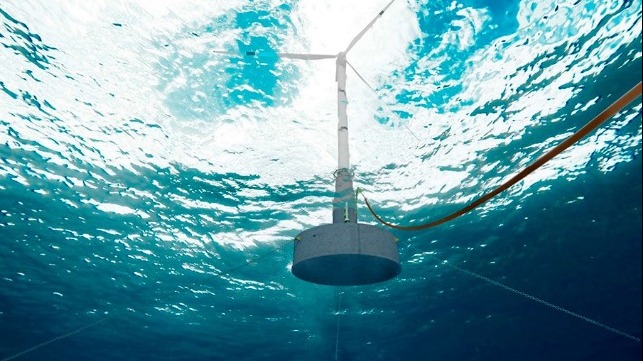New Ballasting System Could Improve Floating Wind Operations and Cost

A new concept for a ballast control system designed to improve the stability of floating offshore wind platforms and reduce costs received Approval in Principle from Lloyd’s Register. Developed by the Spanish engineering company Seaplace working with the German engineering firm Sowento, and the University of Stuttgart, as part of the CROWN project that is aiming at reducing the wave- and wind-induced motion of the floating platform. The AiP follows a Statement of Feasibility issued by DNV in March and now the companies are planning to move forward with the full-size demonstration concept.
“Lloyd’s Register is proud to have supported Seaplace in the final phase of the CROWN technology development,” said Mark Darley, LR Marine & Offshore Director. “This novel technology could help operators and their floating wind assets reach their market potential, with estimates of up to 10GW of capacity projected to be installed globally by 2030 and more than 100 GW by 2050.”
Seaplace’s active ballast control system is used to ballast/de-ballast the unit, permitting the operator to partially or fully compensate the mean tilt produced by the wind loads improving the stability of floating offshore wind platforms. The technology is used to change the floater from its transport draft to its operational draft and vice versa and could also be used to stabilize the platform if a compartment is damaged. According to the company, the technology improves the safety level of the floating platform. Additionally, the system’s level of redundancy ensures it will still function even if one component, such as a valve or pump, fails for any reason. In addition, its software allows for remote manual operation, semi-automatic control, and automatic operation.
“Seaplace’s CROWN spar platform is a novel concept with the potential to reduce the cost of floating wind generation. Such innovation is essential for the future growth of floating wind, but innovation always brings uncertainty,” said DNV when it completed its analysis.” By achieving the Statement of Feasibility, Seaplace has shown to potential partners that the CROWN spar concept is a promising candidate for further development with a realistic chance of a return on investment.”
Lloyd’s Register reviewed the system against applicable Rules and Regulations for the Classification of Offshore Units, including the acceptance of preliminary Failure Modes Effects, and Criticality Analysis (FMECA) of the system.
According to Seaplace, the system has been designed to be used with different types of floating wind platforms. It was first tested with software-in-the-loop tests and then with scale model tests performed at the IH Cantabria Offshore basin, as part of the CROWN project.
The floater platform technology has also been designed to optimize manufacturing, enabling the production of one unit per week. Seaplace anticipates the floater concept will be able to host not only large wind turbines and also hydrogen/ammonia systems and solar panels, all at once without impacting the unit stability.
